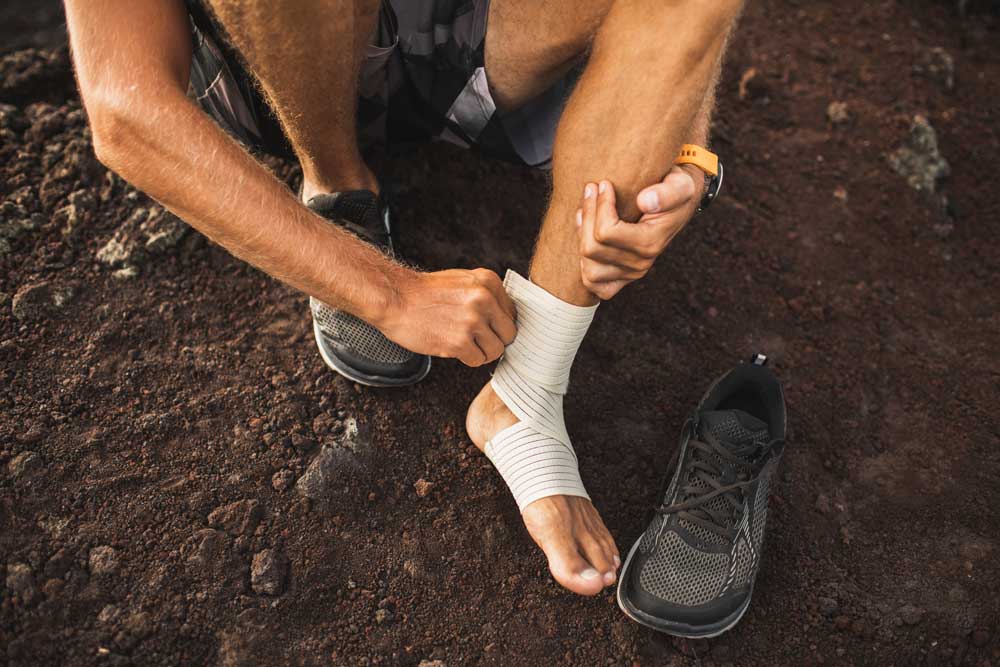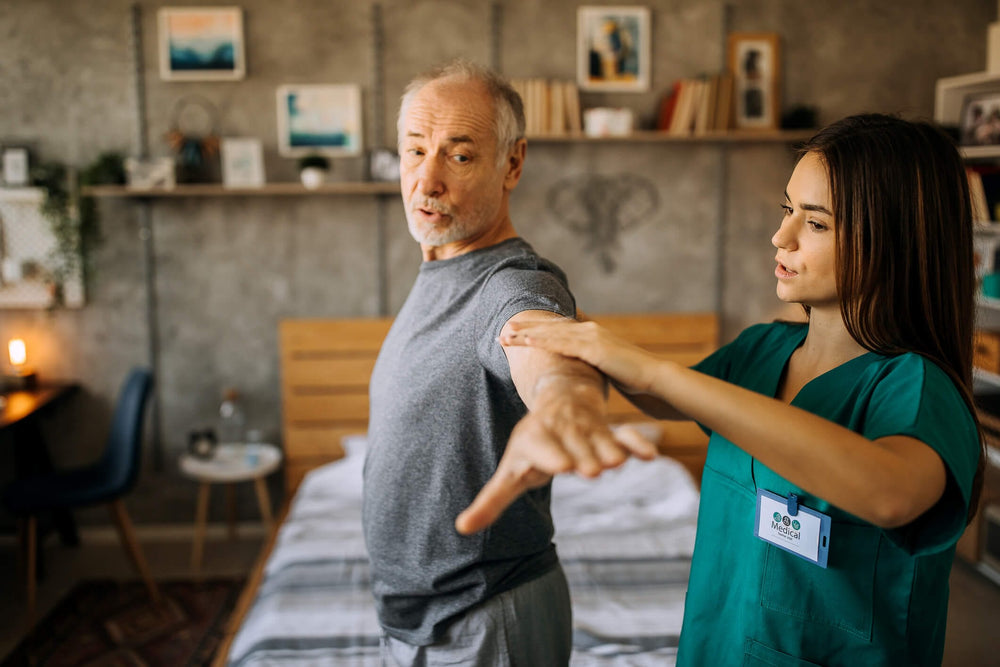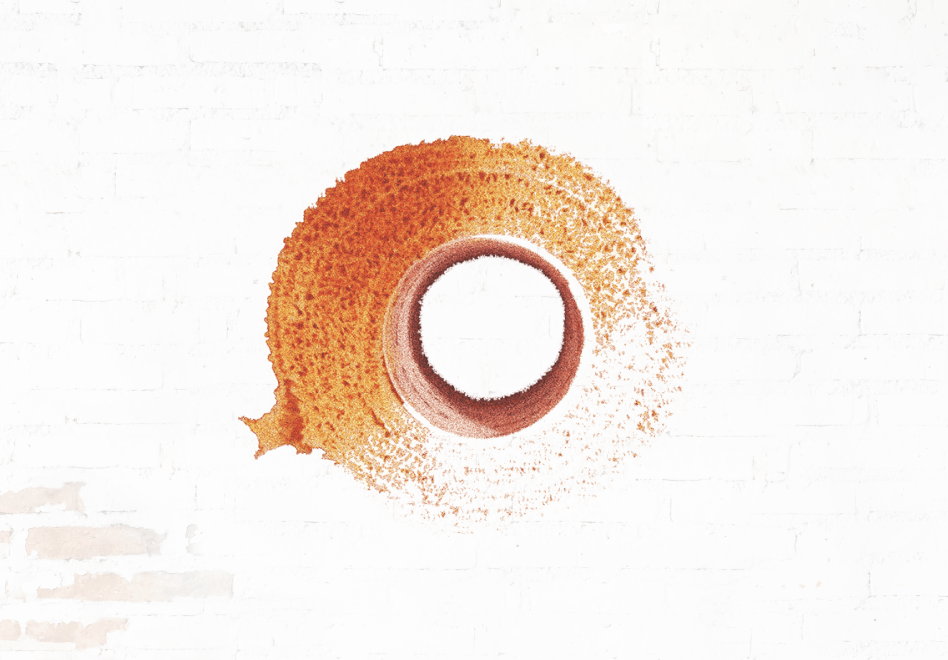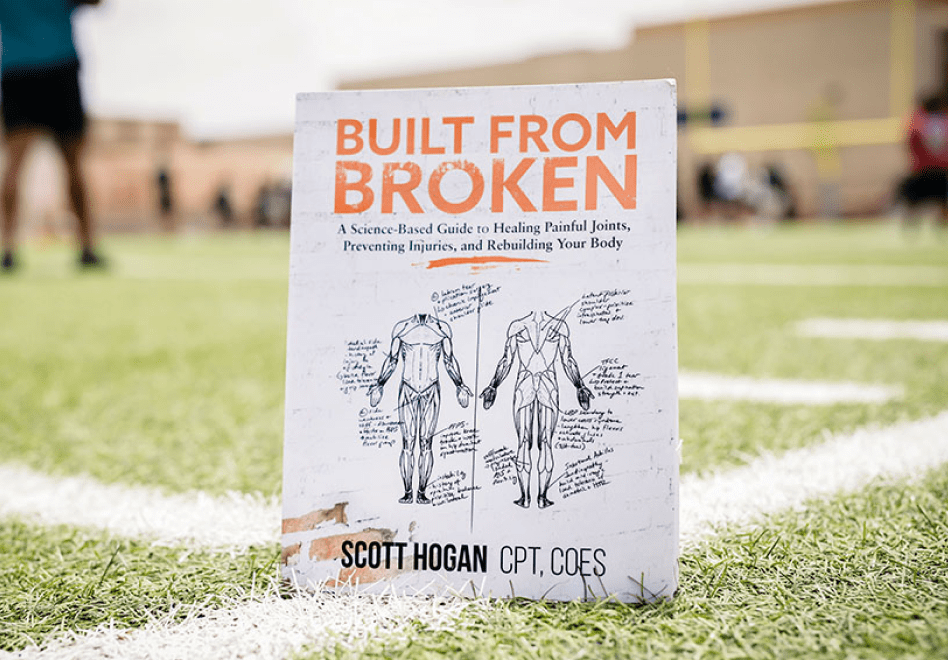
Be built (to last).
The right supplements can help you recover naturally and build a resilient body.

Supplement Quiz
Take this short quiz to discover the perfect supplements for your needs and goals.
About SaltWrap

Built from Broken
Get the best-selling book from SaltWrap founder, Scott Hogan, and start rebuilding today.
How Stretching Can Make Low Back Pain Worse
by Scott Hogan, ACE-CPT, COES
One of the most pervasive myths about low back pain is that you can fix it by stretching.
But the research on stretching for low back pain is not flattering.
In fact, stretching often does more harm than good.
A 2011 systematic review (a study of studies) revealed that stretching has “no significant effect.”1
It gets worse. Stretching before exercise not only impairs performance, it also increases injury risk.2, 3
The data is clear on this.
So why has mainstream medicine and fitness been so slow to adopt this new thoroughly documented science?
For two main reasons:
-
Virtually every treatment is aimed at resolving the symptoms of low back pain — not the root cause. A pill or injection might provide temporary relief, but does nothing to target the underlying cause. Masking the pain merely increases risk of further injury.
-
Most people do lack basic flexibility, which makes it easy for practitioners and trainers to point the finger at flexibility and recommend stretching. It’s a classic case of confusing correlation with causation.
In this article, I'll detail the most common causes of low back pain — and the three targeted exercises proven to provide fast, lasting relief.
These are the same exercises I’ve prescribed for hundreds of clients and thousands more online coaching clients. They’re simple, easily performed at home without equipment, and laser-targeted at the core causes of low back pain.
To understand why stretching makes low back pain worse, and what to do instead, we first must understand why low back pain develops in the first place.

What Causes Low Back Pain?
Put simply, the low back (lumbar spine) isn’t designed to be mobile relative to other joints.
The main function of the low back is to hold up the weight of your upper body.
It’s primarily a “stability joint.” It stabilizes your trunk while you stand upright, bend over, and twist, all while protecting your spinal cord from injury.
Figure 8.1 below from my book Built From Broken illustrates how the body’s chain of joints is made of stability and mobility joints in alternating fashion.
Mobility joints are designed for extreme ranges of motion, while stability joints are designed to hold the system together.

As you can see, the low back is surrounded by two “mobility joints” — the hips and the upper back.
And herein lies the problem.
Weakness in the hips and upper back forces the low back to compensate and become more mobile than it is designed to be.
This increased repetitive movement and load adds up, causing damage to the tendons and ligaments that comprise your lumbar spine.
The problem isn’t technically even with your low back. It’s the surrounding joints!
In other words, low back pain is often a downstream problem caused by deficiencies in your hips and upper back.
The Low Back Is Not Designed to Be Stretched (Do This Instead)
Now, you can see why further stretching the already irritated muscles, tendons, and ligaments around your low back is a bad idea.
And, hopefully now you can see a path forward. The fundamental problem is that we’ve been treating the low back like a mobility joint instead of a stability joint.
The solution is not stretching the low back, but activating the hips and upper back — and making them do their fair share.
This effectively takes the tension off the problem area of your low back, allowing symptoms to naturally resolve.
There are dozens of exercises and stretches for the hips and upper back. But these three provide the biggest bang for your buck.
If you do these right, you’ll get relief.
First, we need to wake your butt muscles up from their slumber.
Then, we need to mobilize the joints above and below your low back without putting additional stress on it.
Here’s how.
Step 1: Activate your glutes with these two moves.
For as much attention as the glutes get from an aesthetic perspective, they are underrated for their role in virtually every lower body movement.
The glutes are (or should be) the prime moving muscles for hip-dominant movements like bending and squatting.
They provide joint stability not just for your low back but also your knees and lower legs.
Prolonged sitting, imbalanced exercise habits, and a sedentary lifestyle can cause your glute muscles to atrophy and lose their ability to contract properly.
This condition is called gluteal amnesia.
When this happens, your low back has to step up and become the prime mover of even basic movements instead of filling its role as a stabilizing joint.
This puts you at risk of acute low back injuries and chronic pain from overuse. Even walking can put unnecessary stress on your joints if you aren’t using your glutes properly.
It’s a common problem. And luckily it can be remedied quickly, typically in just a few sessions.
Your glutes will remember what they are supposed to do with a little nudging.
After doing the first two exercises below, you’ll feel those muscles waking up!
If you want more in depth exercise descriptions, you can find them in Built From Broken.
Now, for the exercises!
Watch the videos below and do these twice daily. (It's really that simple.)
Exercise 1: Fire Hydrant
Instructions: Complete 20 repetitions on each leg. It's OK to pause between repetitions if you get tired as long as you complete all 20 repetitions.
Exercise 2: Glute Bridge
Instructions: Complete 20 repetitions, holding the top position for a moment between each repetition.
Step 2: Mobilize the joints surrounding your low back with this stretch.
After you’ve woken up the glutes, it’s time to activate the upper back (thoracic spine) and hips.
When these joints are tight, your low back is forced to flex and carry loads that it’s not designed for.
When these joints are flexible, your low back has permission to stand strong and stable.
Exercise 3: World's Greatest Stretch
Instructions: Complete 5 repetitions of this movement with your right leg forward. Switch leg positions, then complete 5 more repetitions.
Your Daily Low Back Pain Protocol
That's it! Just these three moves can relieve and prevent back pain when performed daily.
Each day, perform these exercises in order. For best results, do them once in the morning, and once in the evening:
-
Fire Hydrant: 20 repetitions per leg
-
Glute Bridge: 20 repetitions (or 10 repetitions of the one-leg variation per side)
-
World's Greatest Stretch: 5 repetitions on each side of your body
If you found this article helpful, you're going to love my award-winning book, Built From Broken.
It's a complete guide to healing painful joints, preventing injuries, and rebuilding your body.
Built From Broken:
The Award-Winning Pain Management Book
Grab a copy of my book and join 148,000+ people who have learned to heal themselves and rebuild stronger every day.
Built From Broken:
The Award-Winning Pain Management Book
Grab a copy of my book and join 148,000+ people who have learned to heal themselves and rebuild stronger every day.
-
Kay, A. D., & Blazevich, A. J. (2012). Effect of acute static stretch on maximal muscle performance: A systematic review. Medicine and Science in Sports and Exercise, 44(1), 154–164. https://doi.org/10.1249/MSS.0b013e318225cb27
-
Young, W. B. (2007). The use of static stretching in warm-up for training and competition. International Journal of Sports Physiology and Performance, 2(2), 212–216. https://doi.org/10.1123/ijspp.2.2.212
-
Witvrouw, E., Mahieu, N., Danneels, L., & McNair, P (2004). Stretching and injury prevention: An obscure relationship. Sports Medicine, 34(7), 443–449. https://doi.org/10.2165/00007256-200434070-00003
Founder: Scott Hogan

I created SaltWrap to bring together the most practical ideas in therapeutic sports nutrition, corrective exercise, and functional fitness — with the goal of keeping you (and myself) strong, mobile, and built to last.
I've worked as an A.C.E. Certified Personal Trainer, Orthopedic Exercise Specialist, and nutritional supplement formulator.
But more importantly — I've spent most of my life battling injuries, joint pain, and just being plain beat up. So I know what it's like to struggle toward fitness goals.
SaltWrap is here to push you through injuries, setbacks and perceived physical limitations. To a place beyond what you think you're capable of. Sign up here to stay in the loop.
Learn more about my best-selling injury prevention and recovery book, Built from Broken.









